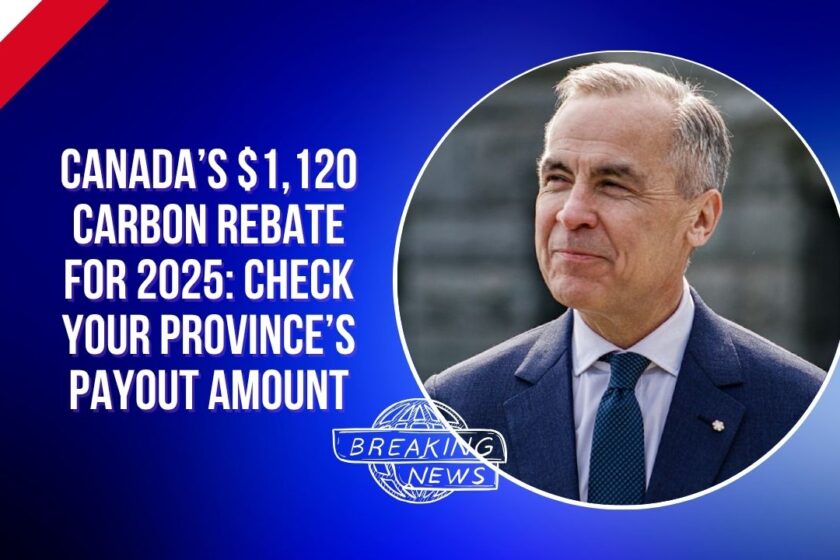Millions of Canadian families are now receiving increased quarterly climate payments under the Canada Carbon Rebate 2025. These updates not only raise payment amounts but also enhance the program’s accessibility and transparency, reinforcing the federal government’s dedication to climate responsibility amid rising inflation and environmental challenges.
Key Reforms to the 2025 Rebate Program
To address the rising carbon pricing and reflect public input, the federal government introduced significant changes to improve fairness and functionality.
Highlights of the 2025 Rebate Changes:
- Higher quarterly payments for eligible individuals and families
- Automatic direct deposits to most recipients
- Eligibility based on 2024 income tax filings
- Revised rebate rates tied to the carbon price hike to $95/tonne as of April 2025
- A 20% rural supplement for residents living outside major metropolitan areas
These reforms aim to lessen the burden of carbon costs while continuing to incentivize eco-conscious choices.
Canada Carbon Rebate 2025: Provincial Payment Details
As of July 2025, eligible Canadians in participating provinces are receiving larger rebate payments, varying by province, family size, and rural status.
| Province | Individual | Couple | Family of 4 | Rural Supplement |
|---|---|---|---|---|
| Alberta | $140 | $210 | $280 | +20% |
| Ontario | $110 | $165 | $220 | +20% |
| Manitoba | $120 | $180 | $240 | +20% |
| Saskatchewan | $130 | $195 | $260 | +20% |
| Nova Scotia | $100 | $150 | $200 | +20% |
| Newfoundland | $105 | $157 | $210 | +20% |
Upcoming payment dates:
- July 2025
- October 2025
- January 2026
- April 2026
Deposits appear as “Climate Action Incentive” (CAIP) and are directly transferred to the recipient’s bank account using the latest CRA tax filing data.
Household Impact: Increased Relief for Rising Costs
With energy and transportation costs soaring, the enhanced rebate amounts are proving especially helpful. In many cases, households now receive more in rebates than they pay in carbon taxes.
Example:
A family of four in Alberta is eligible for $280 per quarter, totaling $1,120 annually, excluding the 20% rural bonus. The Parliamentary Budget Officer estimates that 80% of households will get back more than they pay in carbon-related costs.
These payments are particularly valuable to low- and middle-income families, helping them better manage household expenses while promoting environmentally responsible behavior.
Why the Rebate System Is Essential in 2025
The Canada Carbon Rebate remains a crucial element of the country’s climate policy, ensuring that the financial burden of pollution stays fair as carbon prices continue rising toward 2030.
Benefits of the Rebate Program:
- Reinforces the “polluter pays” principle
- Delivers direct and transparent payments to citizens
- Eliminates the need for manual applications or recalculations
- Ensures regular, predictable financial support
This approach strengthens public engagement and supports Canada’s broader environmental goals.
How to Access the 2025 Canada Carbon Rebate
Receiving the 2025 rebate is seamless—there’s no special application required.
Steps to Get Your Payment:
- File your 2024 tax return with the Canada Revenue Agency (CRA)
- Make sure your direct deposit details are accurate
- Look for payments labeled “CAIP” in your bank account
- Payments are automatically calculated and disbursed based on your return
Even newcomers or first-time filers can qualify, provided they meet residency requirements.
Eligibility Criteria for the Rebate
If you reside in a participating province and filed a 2024 income tax return, you’re likely eligible.
Rebate amounts are determined by:
- Family composition
- Province of residence
- Rural vs. urban postal code
There is no need to manually apply—the CRA automatically determines your eligibility using your tax data.
What Is the 20% Rural Supplement?
Canadians living in rural or remote communities receive a 20% bonus on their rebate to account for limited access to public transit and longer commutes.
Eligibility is determined by your postal code, and the supplement is added automatically to your payment.
Conclusion
The Canada Carbon Rebate 2025 reflects the government’s commitment to balancing climate action with economic fairness. With larger quarterly payments, simplified access, and an inclusive structure that supports rural families, the program ensures that the majority of households not only cope with carbon pricing but benefit from it. By making the costs and rewards of carbon accountability visible and fair, the rebate empowers Canadians to engage with the country’s green transition—without financial strain.
FAQs
What is the Canada Carbon Rebate 2025?
The Canada Carbon Rebate 2025 is a government-issued quarterly payment that compensates Canadians for the costs associated with federal carbon pricing, aiming to reduce emissions while protecting household budgets.
How much will I receive in 2025?
Rebate amounts vary based on your province, family size, and rural or urban location. For example, an Alberta family of four can receive up to $1,120 per year, excluding rural bonuses.
Do I need to apply for the rebate?
No. The rebate is automatically issued based on your 2024 tax return filed with the CRA. There’s no separate application process.
When will I receive the rebate payments?
Payments are made quarterly—in July 2025, October 2025, January 2026, and April 2026. Deposits are labeled “CAIP” or “Climate Action Incentive”.
Who qualifies for the 20% rural supplement?
Canadians living in rural or remote areas, as determined by their postal code, automatically receive a 20% supplement on top of the standard rebate amount.

